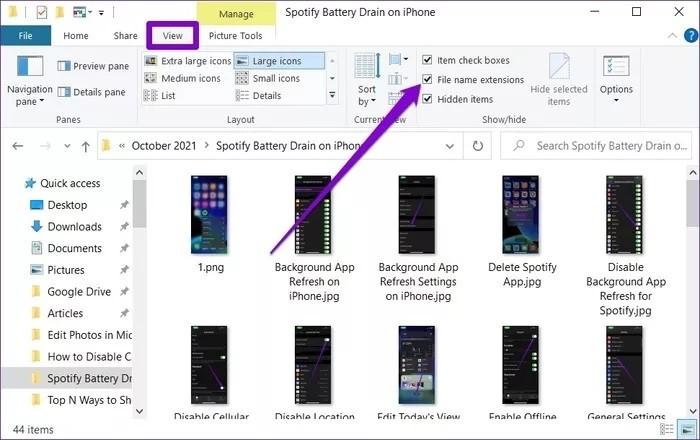The file extension or File Extensions in the Windows operating system, such as JPEG, exe, and others, are the main indication of the file type, which also gives an indication of the appropriate application to run this file, and despite its importance, Windows 10 disables display The file extension is by default, although hiding it may lead to a security issue. Without knowing the file type, you may make a mistake and activate a malware without knowing or thinking that it is a music file or an image.
As we know, Windows 10 does not display file extensions on its own, but needs to enable the display extension feature Files or their type first in order to display them, and in this article we will learn about the most popular ways to enable the display of file extensions in the Windows 10 operating system.
The easiest way to display the file type or extension is through the familiar interface of File Explorer in Windows 10 To be able to launch the file browser, press the Windows and E buttons on the keyboard, then click on the View tab at the top to open its menu, and in it put a tick in the box in front of File name extensions.
This way the file extension will appear at the end of its name, and you can hide the extension in the same way by unchecking the box.
You can also follow the old classic method by opening the settings, open the start menu and in the search box type file explorer options, and when the search result appears, press Open on the right as in the image.

In the window that appears, click on the View tab, and from the bottom of the Advanced settings tab, scroll until you find the phrase Hide extensions for known file types, uncheck the box in front of it, then click on Apply and then OK.
To stop displaying file extensions, repeat the same steps again and check the box.
If you are a fan of classic computer commands, and prefer to use Command Prompt commands, you can use them for the same purpose. This method is distinguished by changing the settings for displaying extensions to all computer users in the event that you have I opened the system with the user Admin.
From the Start menu, type command prompt, then click Run as administrator from the section on the right.
After opening the Command Prompt window, type the following command:
reg add HKCU\Software\Microsoft\Windows\CurrentVersion\Explorer\Advanced /v HideFileExt /t REG_DWORD /d 0 /f
Press the Enter button
To be able to hide the extensions, repeat the previous steps and enter the following command:
reg add HKCU\Software\Microsoft\Windows\CurrentVersion\Explorer\Advanced /v HideFileExt /t REG_DWORD /d 1 /f
In addition to the previous steps, you can also display or hide file extensions by changing the Windows Registry settings, but we must note that the Windows Registry tool is an internal part of the Windows operating system. Do not make any modification to its settings without knowledge that may lead to major risks to the operating system and your device, so make sure to follow the following steps carefully.
Read alsoPress the two Windows buttons And R on the keyboard to open the Run command, and in the Run box, type regedit and then press Enter.
After opening the tool, from the address bar above, enter the following path
HKEY_CURRENT_USER\Software\Microsoft\Windows\CurrentVersion\Explorer\Advanced
In the section on the right, double-click the left mouse button on the HideFileExt file, to open a small pop-up window, and in it, under Value data, enter the number 0 if you want to display the extensions, or 1 if you do not want to display them.
After completion, turn off the device and restart it to implement the change that you made in the previous step.